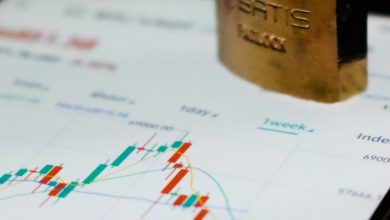How to Trade Cryptocurrencies with Leverage

- Understanding leverage in cryptocurrency trading
- Benefits of trading cryptocurrencies with leverage
- Risks and pitfalls of using leverage in crypto trading
- Choosing the right leverage ratio for your trading strategy
- Tips for managing leverage effectively in cryptocurrency trading
- Regulations and guidelines for leveraged trading in the crypto market
Understanding leverage in cryptocurrency trading
Understanding leverage in cryptocurrency trading is crucial for traders looking to maximize their potential profits. Leverage allows traders to control a larger position with a smaller amount of capital, amplifying both gains and losses. It is important to note that while leverage can increase profits, it also increases the risk of significant losses.
When trading cryptocurrencies with leverage, traders borrow funds from the exchange to increase their buying power. This means that a trader can enter into larger positions than they would be able to with their own capital alone. For example, with 10x leverage, a trader can control a position worth 10 times their initial investment.
It is essential for traders to understand the risks associated with leverage in cryptocurrency trading. While leverage can magnify gains, it can also amplify losses. If the market moves against a leveraged position, the trader may be forced to either add more funds to maintain the position or face liquidation, where the exchange closes the position to prevent further losses.
Before using leverage in cryptocurrency trading, traders should carefully consider their risk tolerance and set stop-loss orders to protect their capital. It is also important to start with a lower leverage ratio and gradually increase it as you gain more experience and confidence in your trading strategy.
Benefits of trading cryptocurrencies with leverage
Trading cryptocurrencies with leverage offers numerous benefits for traders looking to maximize their potential profits. Some of the key advantages of using leverage in cryptocurrency trading include:
- Increased purchasing power: Leverage allows traders to control a larger position size with a smaller amount of capital. This means that even with a modest investment, traders can access higher-value assets and potentially earn greater profits.
- Diversification: By using leverage, traders can spread their capital across multiple cryptocurrency assets, reducing the risk of being overly exposed to any single asset. This diversification can help protect against significant losses in the event of a market downturn.
- Enhanced potential returns: With leverage, traders can amplify their gains when the market moves in their favor. This means that even small price movements can result in substantial profits, providing traders with the opportunity to make significant returns on their investments.
- Hedging against downside risk: Leverage can also be used to hedge against potential losses by taking short positions on cryptocurrencies. This allows traders to profit from falling prices, offsetting any losses on their long positions and helping to protect their overall investment portfolio.
- Flexibility and liquidity: Leveraged trading offers traders the flexibility to enter and exit positions quickly, taking advantage of short-term market movements. Additionally, leverage provides increased liquidity, allowing traders to easily buy and sell assets without being limited by their available capital.
Risks and pitfalls of using leverage in crypto trading
Trading cryptocurrencies with leverage can be a lucrative but risky endeavor. It is important to be aware of the potential risks and pitfalls associated with using leverage in crypto trading.
- One of the main risks of using leverage is the potential for significant losses. When trading with leverage, even a small price movement against your position can result in a large loss.
- Another risk is the possibility of liquidation. If the price of the cryptocurrency moves too far in the opposite direction of your position, your trade may be automatically liquidated, resulting in a complete loss of your investment.
- High levels of leverage can also amplify the impact of market volatility, making it difficult to predict price movements and increasing the likelihood of substantial losses.
- Using leverage in crypto trading requires a high level of discipline and risk management. It is important to set strict stop-loss orders and adhere to them to prevent catastrophic losses.
- Additionally, the cryptocurrency market is known for its wild price swings and unpredictable behavior, which can be exacerbated when trading with leverage. It is crucial to stay informed about market trends and news that could impact the price of the asset you are trading.
In conclusion, while leverage can magnify potential profits in crypto trading, it also comes with significant risks. It is essential to approach leverage trading with caution, conduct thorough research, and develop a solid risk management strategy to mitigate potential losses.
Choosing the right leverage ratio for your trading strategy
When trading cryptocurrencies with leverage, it is crucial to choose the right leverage ratio for your trading strategy. The leverage ratio determines the amount of capital you can control with a smaller amount of money. It is important to consider your risk tolerance, trading experience, and market conditions when selecting a leverage ratio.
There are different leverage ratios available, such as 2:1, 5:1, or 10:1. A lower leverage ratio like 2:1 is less risky but also offers lower potential profits, while a higher leverage ratio like 10:1 can amplify both gains and losses. It is essential to find a balance that suits your trading style and risk appetite.
Before choosing a leverage ratio, consider the volatility of the cryptocurrency market. Highly volatile assets may require a lower leverage ratio to manage risk effectively. Additionally, assess your trading skills and ability to handle leverage responsibly. It is crucial to have a solid risk management plan in place to protect your capital.
Overall, selecting the right leverage ratio for your trading strategy is a critical decision that can impact your success in cryptocurrency trading. Take the time to evaluate your risk tolerance, market conditions, and trading experience to make an informed choice. Remember that trading with leverage can magnify both profits and losses, so proceed with caution and always prioritize risk management.
Tips for managing leverage effectively in cryptocurrency trading
When it comes to trading cryptocurrencies with leverage, it is crucial to manage your leverage effectively in order to minimize risks and maximize potential profits. Here are some tips to help you navigate the world of leveraged cryptocurrency trading:
- Start small: Begin with a low leverage ratio to get a feel for how it works without risking too much of your capital.
- Set stop-loss orders: Always use stop-loss orders to protect your investment and limit potential losses.
- Diversify your portfolio: Spread your investments across different cryptocurrencies to reduce risk exposure.
- Stay informed: Keep up to date with market trends and news that could impact the value of your investments.
- Avoid emotional trading: Stick to your trading strategy and avoid making impulsive decisions based on emotions.
By following these tips and approaching leverage trading with caution and discipline, you can increase your chances of success in the volatile world of cryptocurrency trading.
Regulations and guidelines for leveraged trading in the crypto market
When it comes to trading cryptocurrencies with leverage, it is crucial to understand the regulations and guidelines that govern this type of trading in the crypto market. Leveraged trading involves borrowing funds to increase the size of your position, which can amplify both profits and losses. To ensure a safe and secure trading experience, it is important to adhere to the following regulations and guidelines:
- Know your limits: Before engaging in leveraged trading, make sure you fully understand the risks involved and set strict limits on how much leverage you are willing to use.
- Choose a reputable platform: Select a well-established and regulated exchange to conduct your leveraged trading activities. This will help protect your funds and ensure fair trading practices.
- Verify your identity: Many exchanges require users to undergo a KYC (Know Your Customer) process to verify their identity before allowing them to trade with leverage. This is done to prevent fraud and ensure compliance with regulations.
- Stay informed: Keep yourself updated on the latest regulatory developments in the crypto market to ensure that you are trading in a compliant manner. This will help you avoid any legal issues that may arise from non-compliance.
- Seek professional advice: If you are unsure about any aspect of leveraged trading or the regulations surrounding it, consider seeking advice from a financial advisor or legal expert who specializes in cryptocurrencies.
By following these regulations and guidelines for leveraged trading in the crypto market, you can protect yourself from potential risks and trade cryptocurrencies with leverage in a responsible and informed manner.



